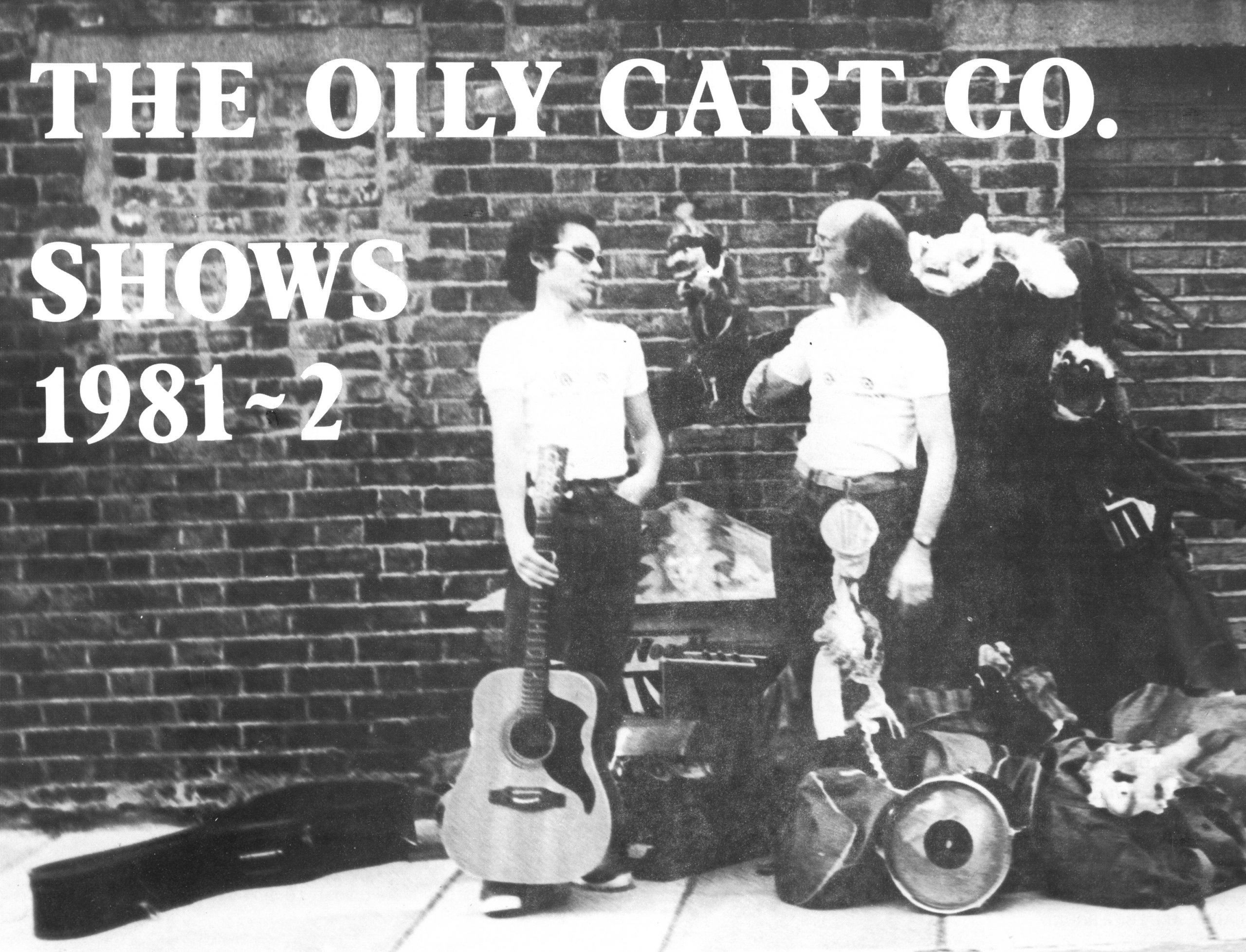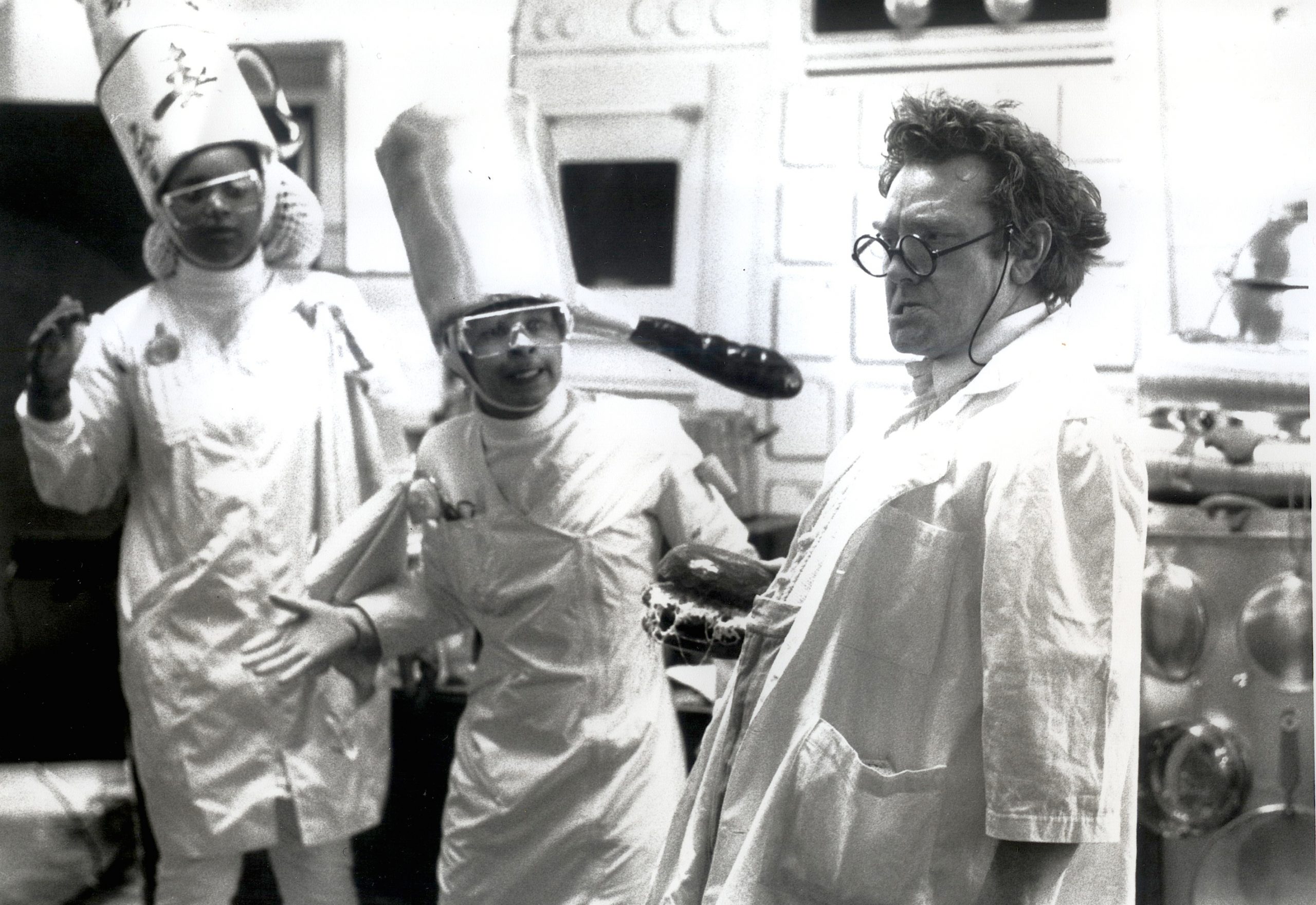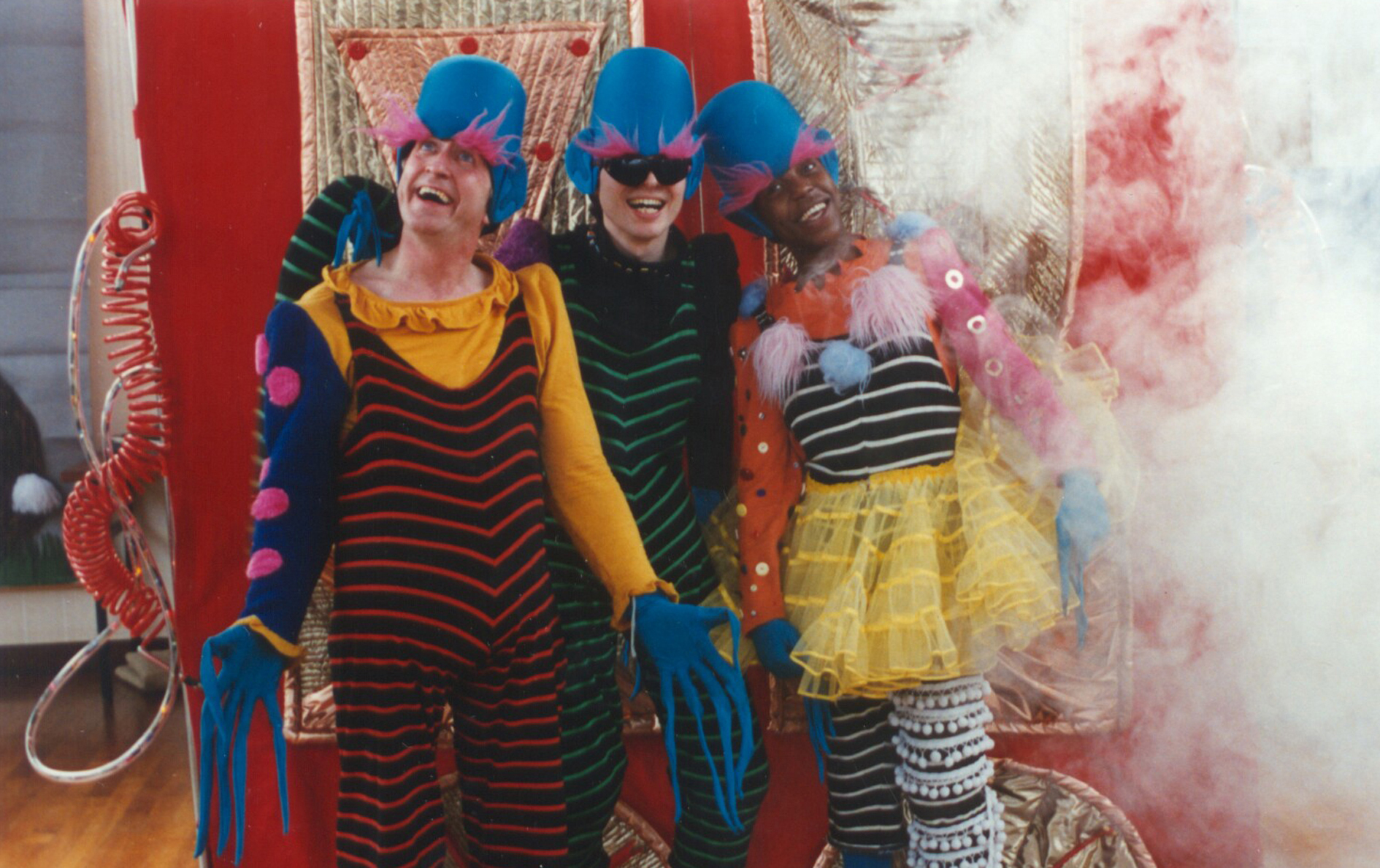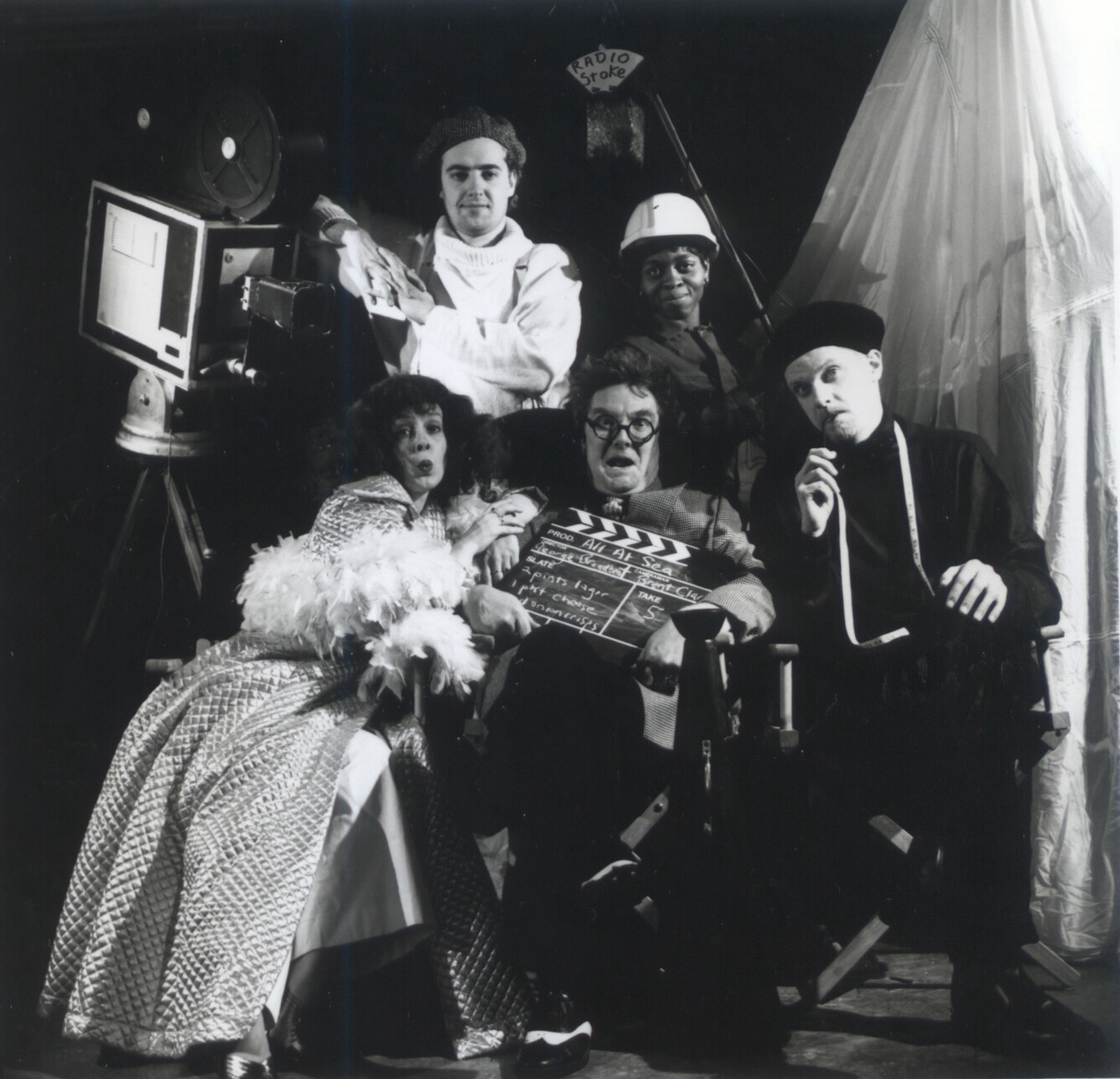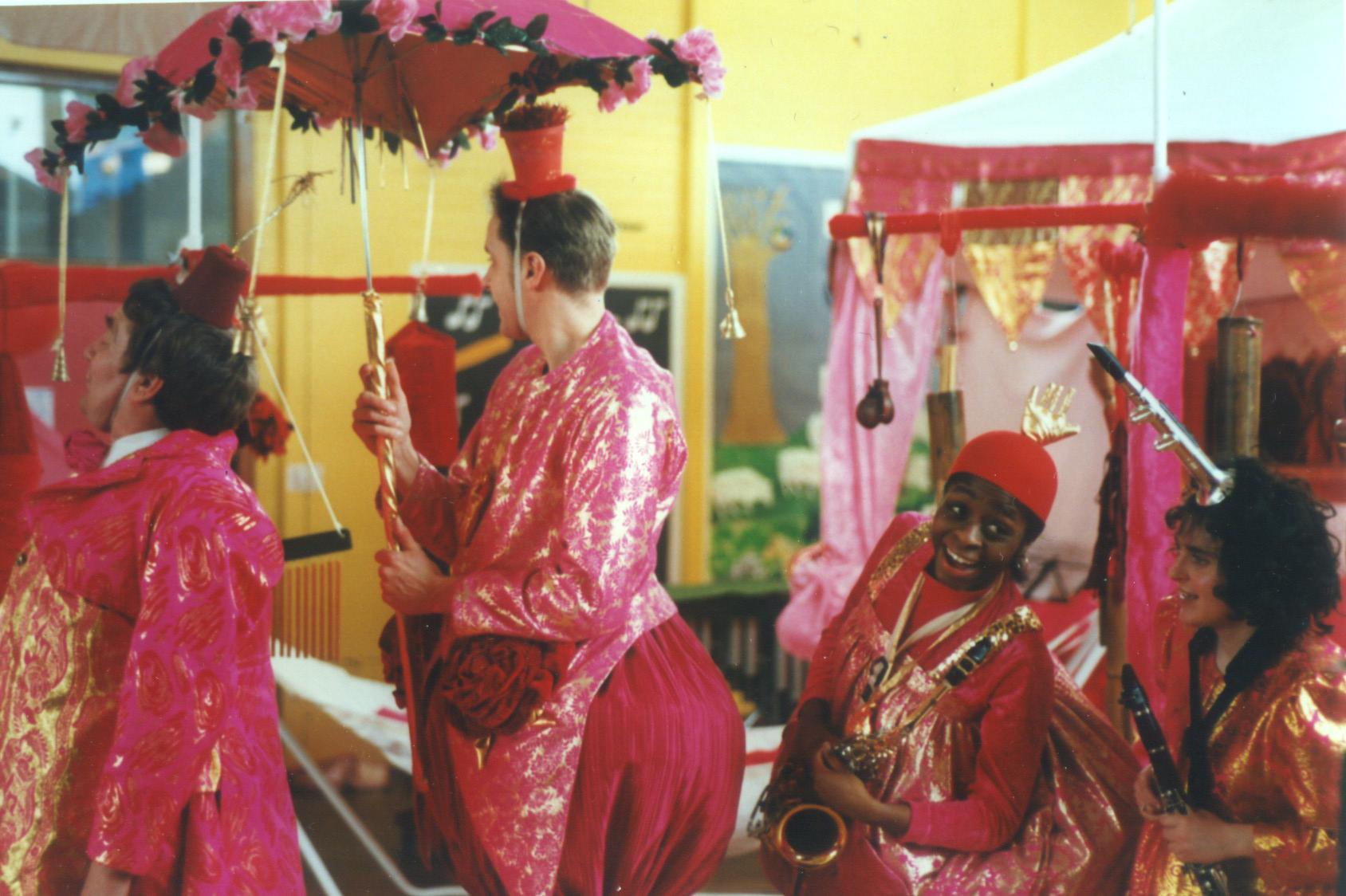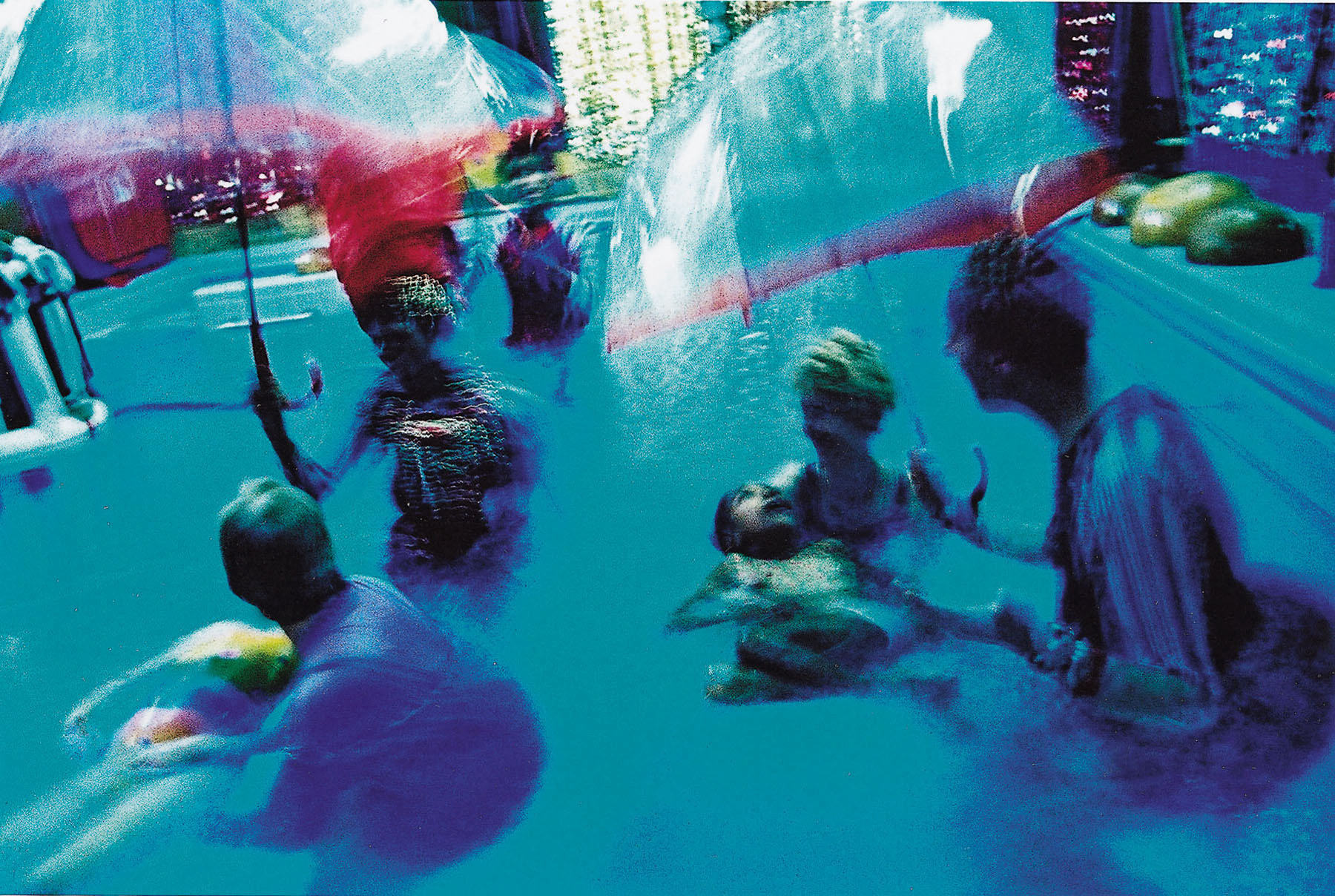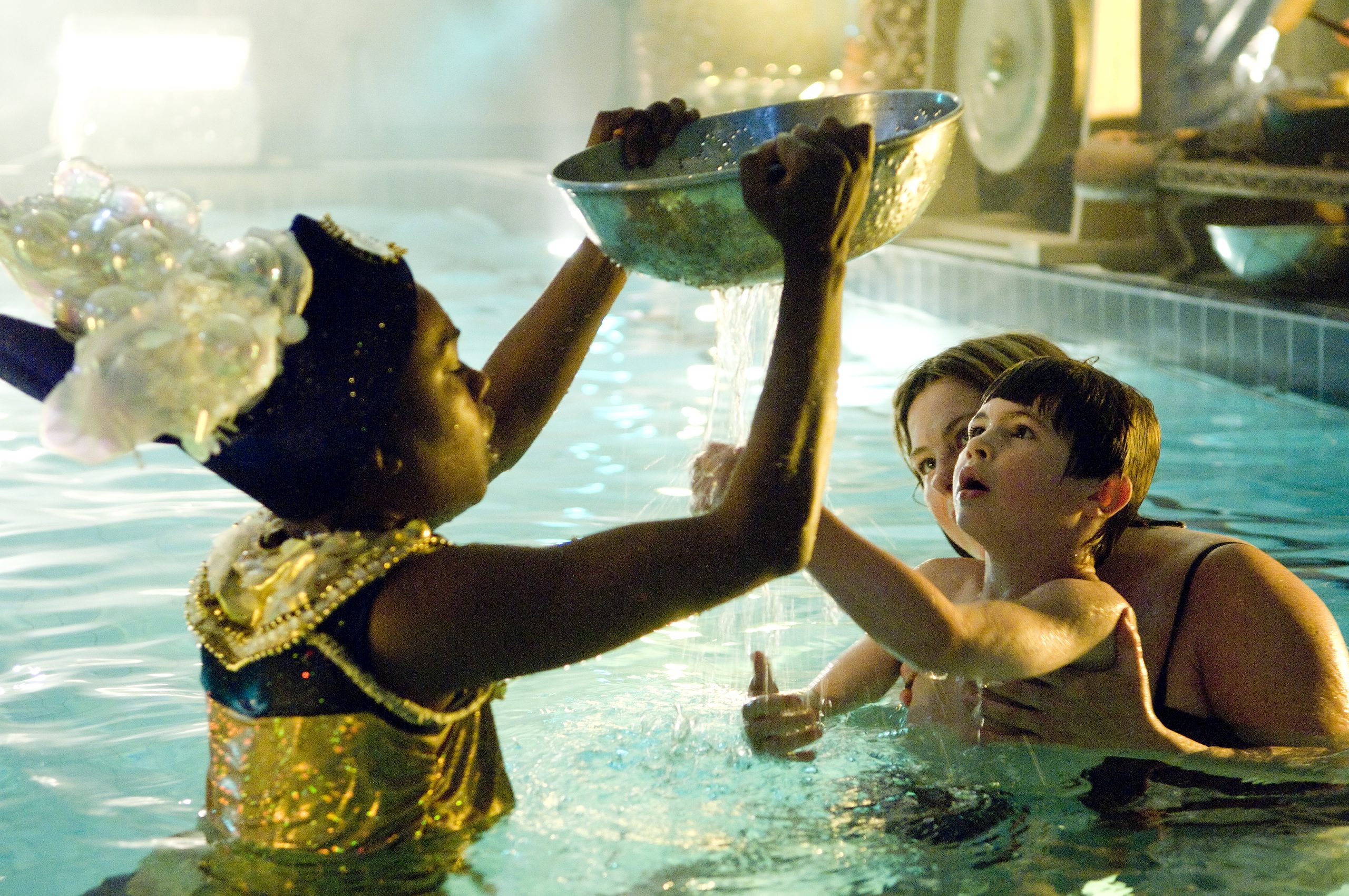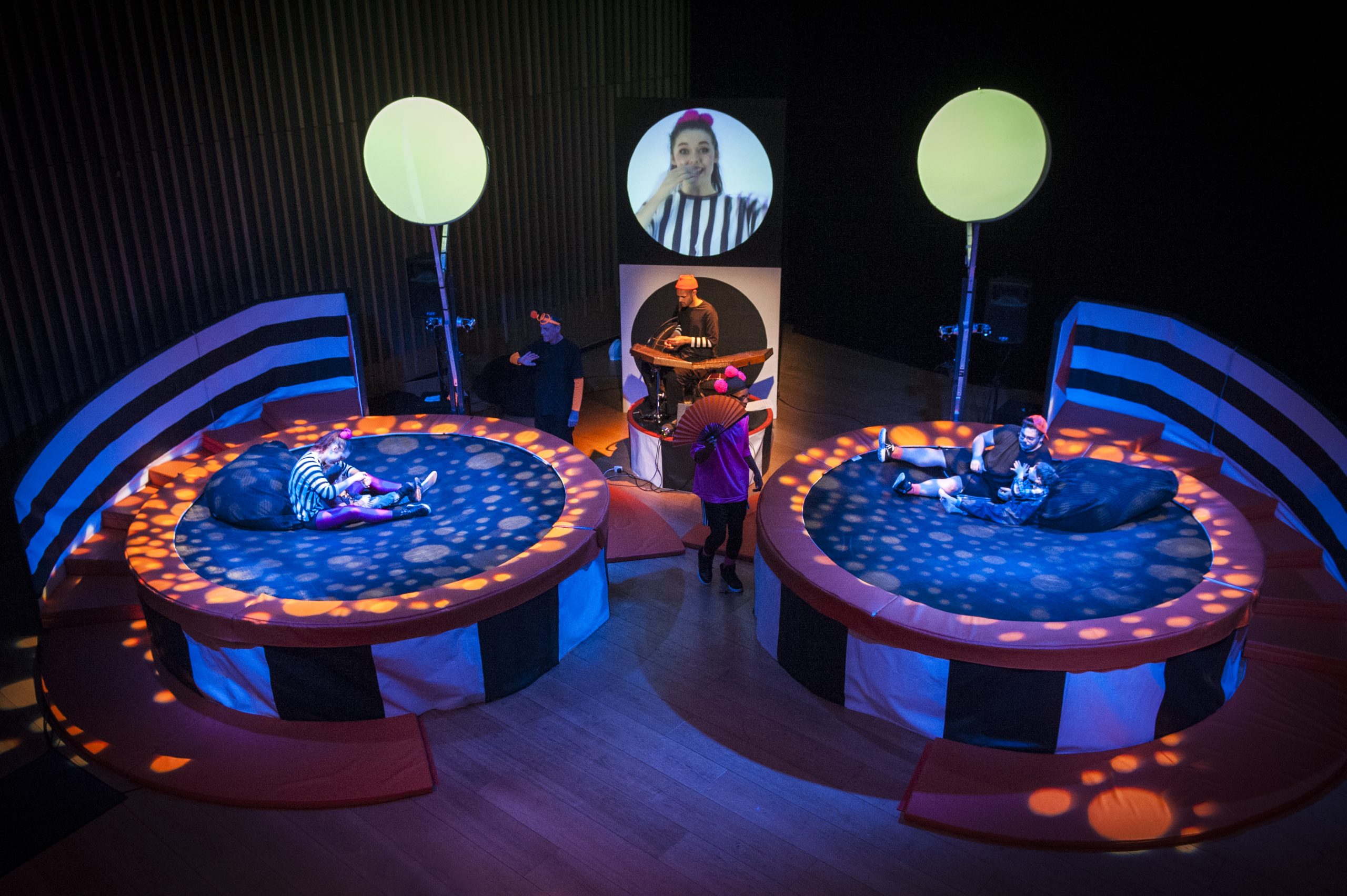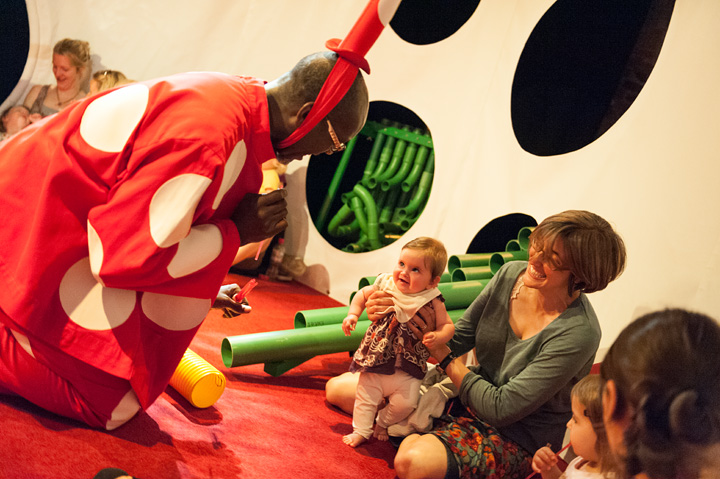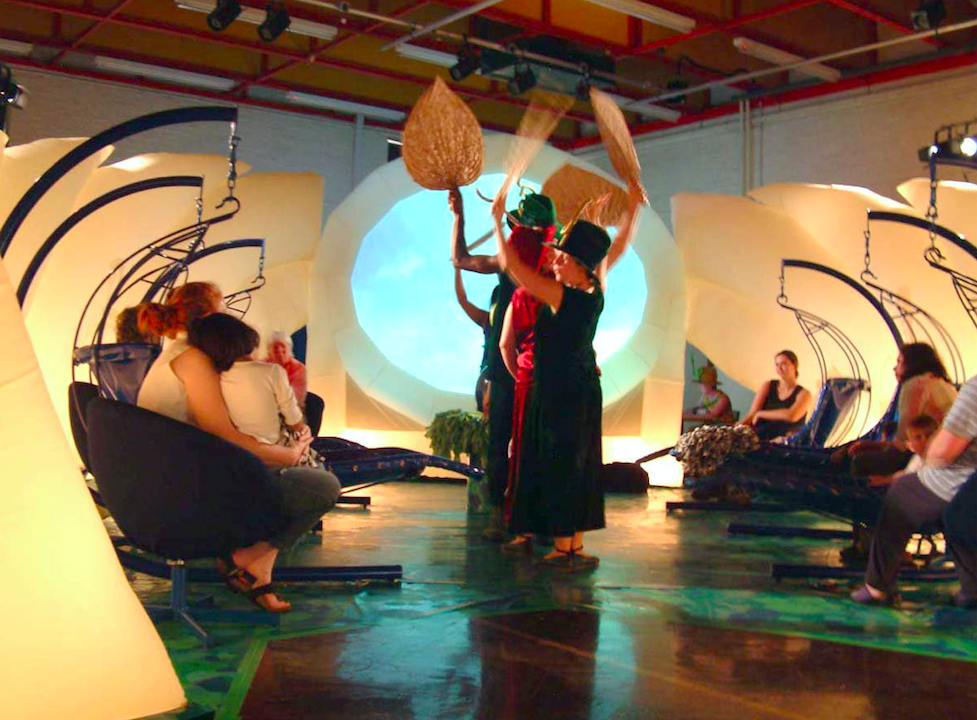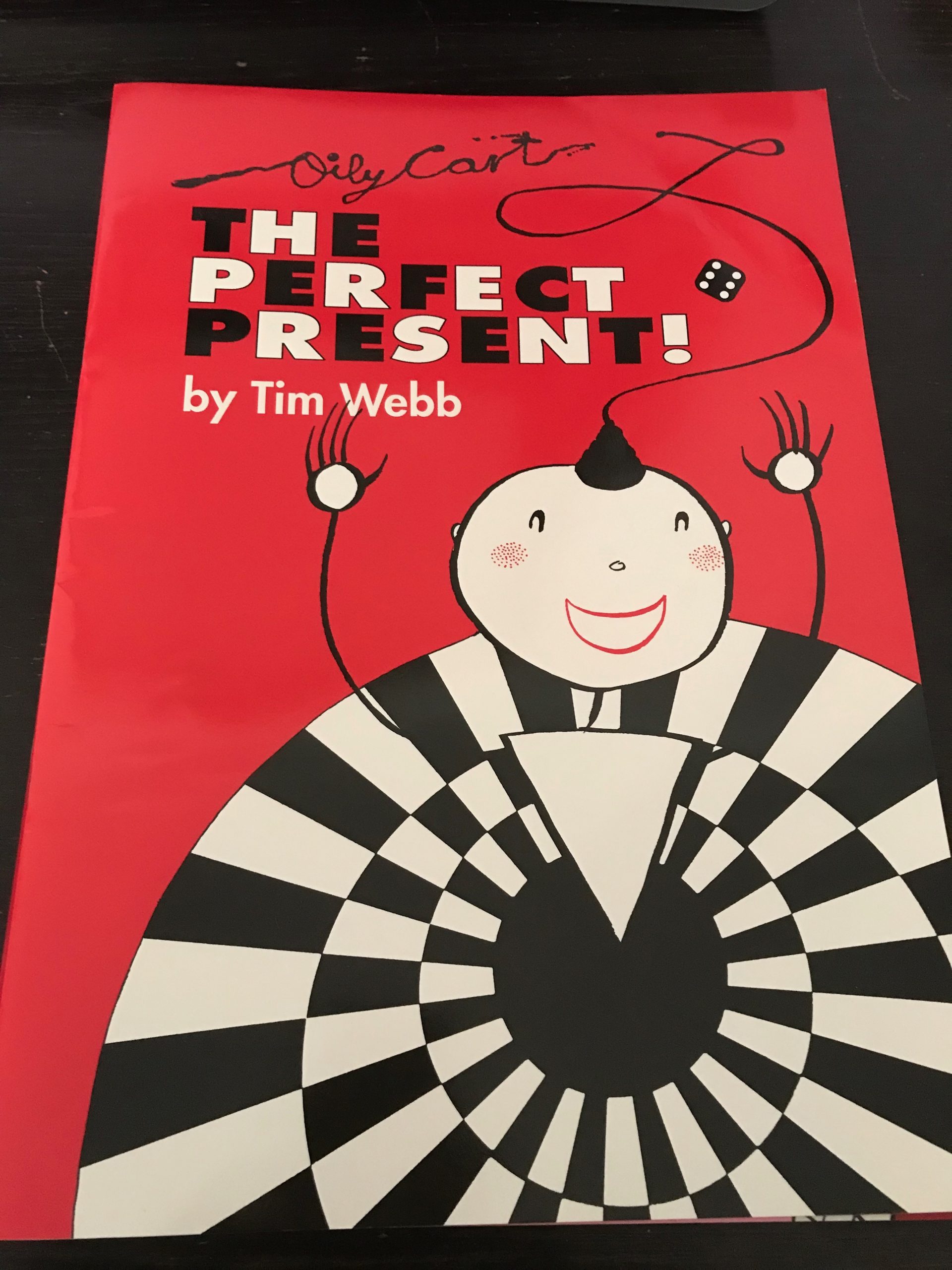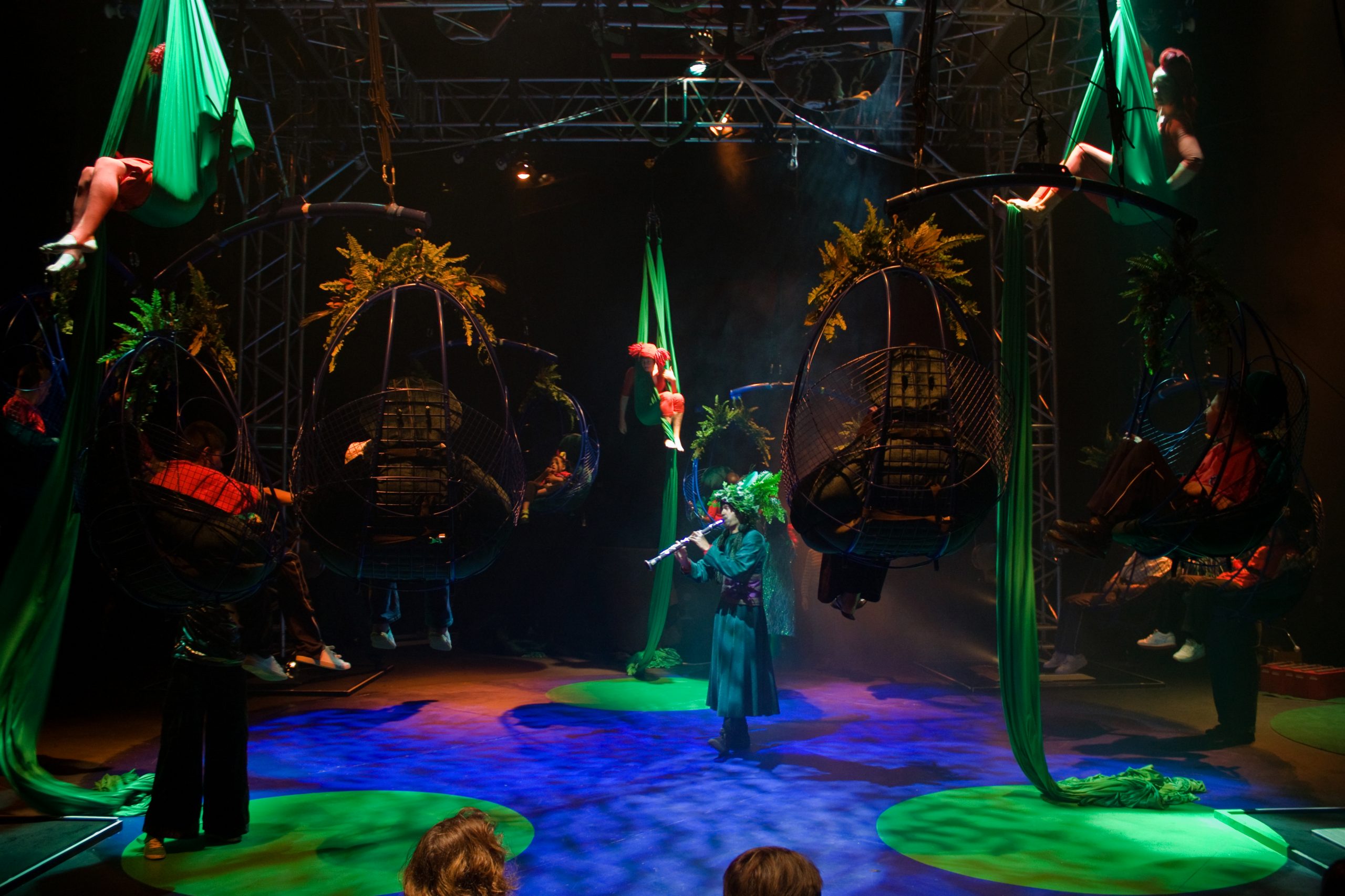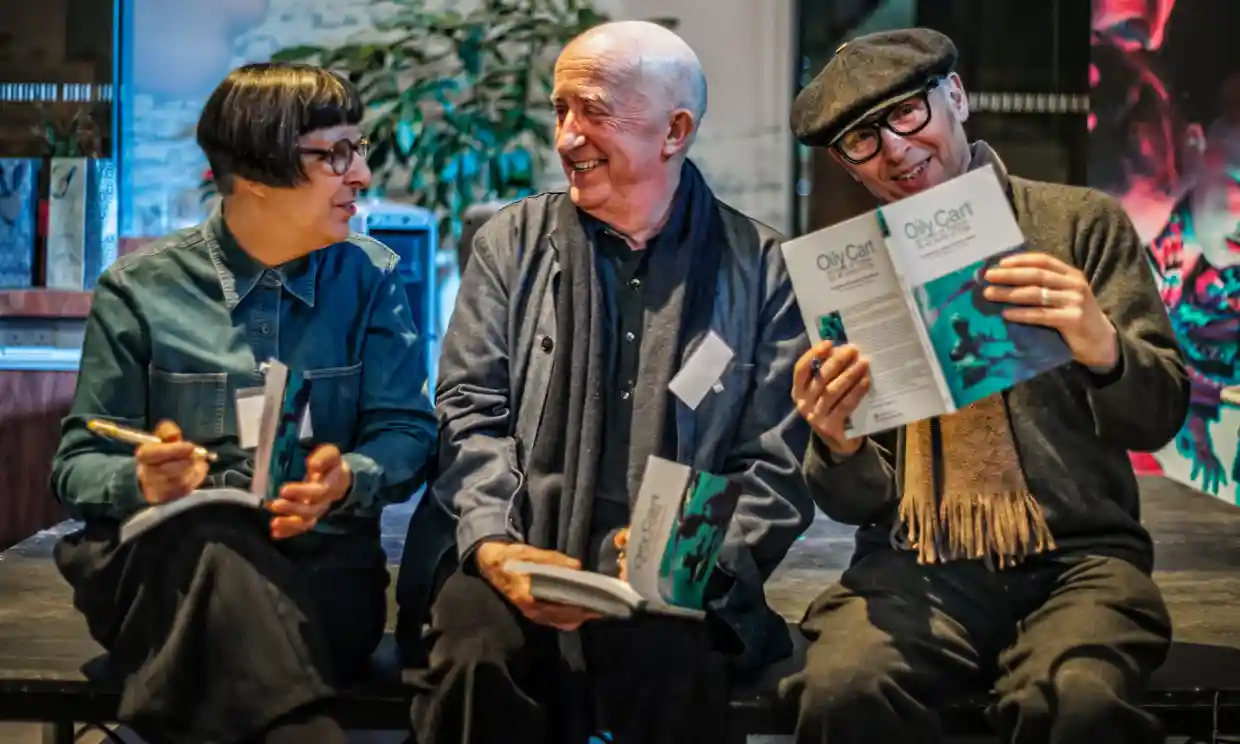In 1981, three friends – writer / director Tim Webb MBE, musician / composer Max Reinhardt, and designer Claire de Loon – started making theatre for children. Through listening to their audiences, learning from the teachers and parents they met, experimenting, collaborating and innovating, they pioneered a brand new artform: Sensory Theatre.
Forty years later, Oily Cart’s work is internationally acclaimed, and the founders’ inclusive, sensory approach to theatre-making has had a ripple effect across the globe. This timeline shares highlights from our rich history – selected by Oily Cart’s founders and current team – to tell the story of Oily Cart.
You can explore Oily Cart’s story, and the history of sensory theatre, further in our Digital Archive, coming soon. A huge thank you to The National Lottery Heritage Fund and National Lottery Players for supporting us to record, preserve and share our work.
Photo: Rainbow Robbers (1983). Tim Webb (left) and Max Reinhardt (right).




